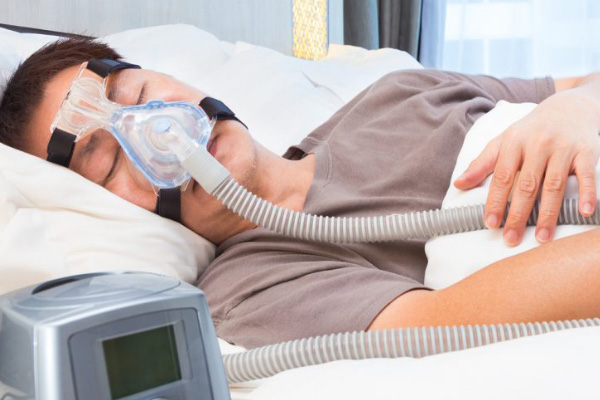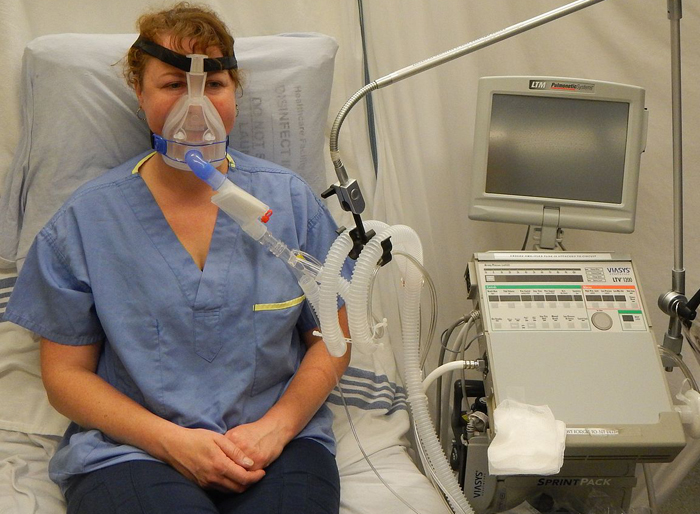Bipap vs. CPAP: Which Is the most effective for Your Sleep Problem?
When navigating the complexities of sleep conditions, the selection in between BiPAP and CPAP therapy is an essential consideration. Each modality offers special advantages tailored to specific conditions, yet the choice rests on individual patient needs and convenience levels. While CPAP supplies a constant air movement appropriate for obstructive sleep apnea, BiPAP's dual stress setups may improve comfort for those with even more complex respiratory problems. Comprehending these distinctions can considerably impact treatment efficacy, leaving one to ponder which choice really straightens with their health and wellness demands and lifestyle.
Comprehending Sleep Disorders
Rest disorders incorporate a variety of conditions that interfere with typical sleep patterns, affecting both the top quality and period of remainder. These problems can show up in various forms, including sleeping disorders, sleep apnea, narcolepsy, agitated leg disorder, and parasomnias. Each problem offers one-of-a-kind difficulties, frequently causing significant daytime exhaustion, cognitive problems, and psychological disruptions.
Sleeplessness is identified by difficulty dropping or remaining asleep, while sleep apnea involves duplicated disturbances in breathing during sleep, often causing fragmented remainder. Narcolepsy, on the other hand, is marked by too much daytime drowsiness and sudden sleep assaults. Troubled leg syndrome triggers awkward sensations in the legs, motivating an uncontrollable impulse to move them, which can likewise prevent the capacity to drop asleep.
The influence of rest disorders extends beyond private wellness, influencing general performance, relationships, and lifestyle. Recognizing the specific nature of each problem is important for reliable medical diagnosis and treatment. As sleep wellness becomes progressively identified as a crucial part of total health, addressing these disorders is vital for improving both rest top quality and daily functioning.
Just How CPAP Functions
Continual Favorable Respiratory Tract Stress (CPAP) treatment is regularly utilized as a main treatment for obstructive rest apnea (OSA) The mechanism of CPAP entails making use of a device that delivers a steady stream of air via a mask put on throughout sleep. This airflow keeps favorable pressure in the air passage, avoiding the collapse or obstruction of the throat that can occur throughout rest.
When an individual breathes in, the CPAP device supplies a continual circulation of air, making certain that the airway stays open - BiPAP Rental. This not only eases the symptoms of OSA, such as snoring and interrupted rest patterns, but likewise lowers the involved health and wellness risks, consisting of cardiovascular complications and daytime fatigue
The stress settings on a CPAP machine can be personalized to satisfy specific patient needs, often figured out via a sleep study. On the whole, CPAP therapy has actually been revealed to significantly improve the quality of rest and total wellness for individuals suffering from obstructive sleep apnea.
Exactly How BiPAP Works
BiPAP, or Bilevel Favorable Respiratory Tract Stress, is a specialized form of non-invasive ventilation that is particularly helpful for people with conditions such as complex sleep apnea or breathing problems. Unlike CPAP, which provides a continuous stream of air at a single pressure, BiPAP provides his comment is here two distinct pressure settings: a higher inspiratory pressure for inhalation and a lower expiratory pressure for exhalation. This dual-pressure technique permits for easier breathing, decreasing the initiative called for during exhalation.
The gadget operates through a mask fitted over the nose or mouth, connected to a machine that generates atmospheric pressure. When the patient breathes in, the equipment supplies the greater stress to assist with airflow, ensuring that the air passage remains open. Upon exhalation, the machine instantly lowers the stress, making it a lot more comfortable for the individual to take a breath out.

Trick Differences Between BiPAP and CPAP

In contrast, BiPAP (Bilevel Favorable Air passage Pressure) supplies two different stress setups: one for inhalation and a lower one for exhalation. This twin stress system permits more comfy breathing, specifically for patients who battle with exhaling against a constant stress. BiPAP is typically advised for patients with complex rest apnea, persistent obstructive pulmonary illness next (COPD), or those that call for additional support throughout rest.
Moreover, the complexity of BiPAP devices normally causes a greater cost and requires much more cautious titration than CPAP. BiPAP Rental. Recognizing these key differences can aid in recognizing which device might be better for specific sleep conditions, establishing the foundation for informed treatment choices
Picking the Right Therapy
Just how can one identify one of the most ideal therapy for handling rest problems? The choice between BiPAP and CPAP therapy mainly rests on the details features of the rest problem, the patient's general health and wellness, and their comfort with the gadget. CPAP, which supplies a continual stream of air, is typically suggested for obstructive rest apnea (OSA) It keeps an open respiratory tract throughout rest, effectively protecting against apneas and hypopneas.
On the other hand, BiPAP gives two degrees of stress: one for inhalation and a reduced one for exhalation. This twin stress system is advantageous for clients with complicated sleep apnea or those that experience trouble exhaling versus a continuous pressure. Furthermore, BiPAP is typically advised for individuals with respiratory conditions, such as persistent obstructive pulmonary condition (COPD), where varying pressure setups can boost comfort and conformity.
Ultimately, a complete assessment by a rest specialist, consisting of a sleep research study, can help establish which therapy aligns best with the individual's demands. Factors such as convenience, simplicity of use, and specific medical problems must also be considered to optimize treatment end results.
Final Thought
In summary, both BiPAP and CPAP offer distinctive purposes in the management of rest disorders. CPAP works for obstructive sleep apnea with consistent airflow, while BiPAP offers double pressure settings that boost convenience for those with complicated rest apnea or respiratory system issues. The choice in between these treatments ought to be guided by specific requirements and problems, demanding a detailed analysis by a sleep professional to make certain optimum treatment end results and improved high quality of sleep.

In general, CPAP therapy has actually been shown to significantly improve the top quality of rest and general wellness for individuals enduring from obstructive rest apnea.
BiPAP is usually recommended for people with complicated rest apnea, persistent obstructive pulmonary illness (COPD), or those who need added support during rest.
CPAP is effective for obstructive rest apnea through regular air flow, while BiPAP offers double pressure settings click to read more that enhance comfort for those with complicated rest apnea or respiratory system concerns.
 Devin Ratray Then & Now!
Devin Ratray Then & Now! Jenna Von Oy Then & Now!
Jenna Von Oy Then & Now! Talia Balsam Then & Now!
Talia Balsam Then & Now! Earvin Johnson III Then & Now!
Earvin Johnson III Then & Now! Raquel Welch Then & Now!
Raquel Welch Then & Now!